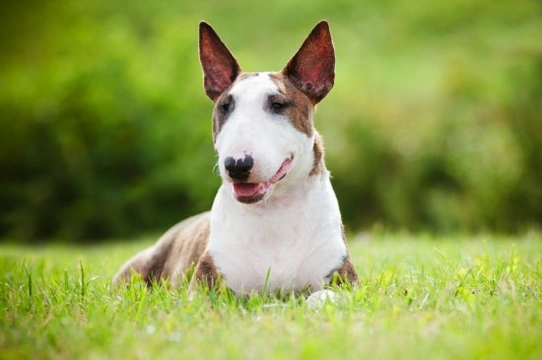
Laryngeal Paralysis in Dogs Explained
Laryngeal paralysis is a condition that occurs in a dog's vocal folds and prevents them from opening as they should which automatically affects the way dog can breath. The one muscle involved in this function is in fact, controlled by one of the longest nerves found in a dog's body which starts its journey in the brain before travelling down the neck and then circling around the heart before travelling back up a dog's neck in order to reach the larynx.
The Causes of Laryngeal Paralysis
Laryngeal paralysis in dogs can be caused by several things and this includes it being a congenital disorder passed down from parents. There are a few breeds that are predisposed to suffering from the condition which includes the following:
- Bouvier de Flanders
- Bull Terriers
- Dalmatians
Other causes include a dog suffering from some sort of trauma which could be surgery to a dog's neck, a bite or certain types of cancer that affect a dog's nerves located in their neck mass or throat. With this said, most cases of laryngeal paralysis are commonly seen in the middle aged to older dogs as well as larger breeds. It is thought the condition is age related due to the decrease in nerve function in older canines. However, the condition can also develop in smaller breed dogs and even cats.
Symptoms and Signs to Watch Out For
There are certain signs and symptoms to watch out for which could indicate there is a problem and that your pet is suffering from laryngeal disease. The symptoms include the following:
- A reluctance to move around or take exercise
- Your pet will experience noisy breathing
- Coughing, choking and gagging
- A change in their voice
- Loss of voice
A lot of the clinical signs which present themselves which could be an indication that a dog may be suffering from the condition are often subtle. These include a soft cough together with a reluctance to go out for a walk which many dog owners mistake for old age or maybe a heart condition. This is especially true because laryngeal paralysis develops slowly over time. You need to listen out for a change in your dog's breathing and take soft coughs seriously because it could be they are suffering from the condition and would need to see a vet as soon as possible.
When dogs are in a relaxed mode"", the symptoms may not be apparent at all but this all changes when they start to move around or get excited. If your pet gets more energetic exercise than usual or if the weather is particularly hot and your dog finds it hard to find somewhere cool, this could cause them unnecessary stress which will affect their breathing which can develop into a life-threatening situation for your pet if you do not react quickly enough and get them to the vet.
Dog owners need to be very aware that this condition develops slowly over time which means it might go unnoticed until there is a crisis situation. With this said, some dogs may experience an acute case of laryngeal paralysis which can be brought on by too much excitement, being over-exercised and/or hot weather conditions. It is essential that veterinary attention is sought immediately because this is a life threatening scenario for your pet.
Diagnosing the Condition
Diagnosing laryngeal paralysis is a pretty straightforward affair and vets can soon tell if a dog's breathing is not as it should be which is a clear indication they may be suffering from the condition. However, the vet would need to examine a dog's larynx and to see how the folds move when they are breathing. Dogs would not normally need to be anaesthetised for this procedure which typically involves the use of an ultrasound probe.
However, if the vet needs to carry out a laryngoscopy, dogs are usually lightly sedated. Your vet may then refer your pet to a specialist for further examination and recommended treatments which could involve a surgical procedure but this would depend on the severity of the condition, how advanced it is and your dog's age.
Treatments For the Condition
When it comes to treating the condition the end goal would be to permanently secure the vocal fold in the open position and vets would carry out this surgery very successfully if they are experienced in carrying out this type of procedure. There are no usual complications associated with the surgery which boasts a high success rates.
However, the biggest issue is when a complication called aspiration pneumonia occurs after surgery but this typically only happens where dogs have experience trouble eating before they undergo the procedure or if they suffer from a condition known as megaoesophagus. With this said, if these conditions are present before surgery, it offers vets the opportunity of assessing whether or not the complication would pose a threat and they would recommend that a dog be carefully fed after they have had the surgery until they are able to normally swallow again.
Prognosis
With the correct management and prompt treatment, dogs who have suffered from laryngeal paralysis can lead a normal life although a few dogs will always have a persistent cough and their breathing may remain noisy especially when they pant. However, this would not affect their quality of life. The important thing is to get your dog to the vet as soon as you think there may be a problem even if they are only experiencing a soft cough and their breathing is only very slightly noisier than usual. The key to successfully treating laryngeal paralysis is to have a correct diagnosis made early followed by the right type of treatment.
""



